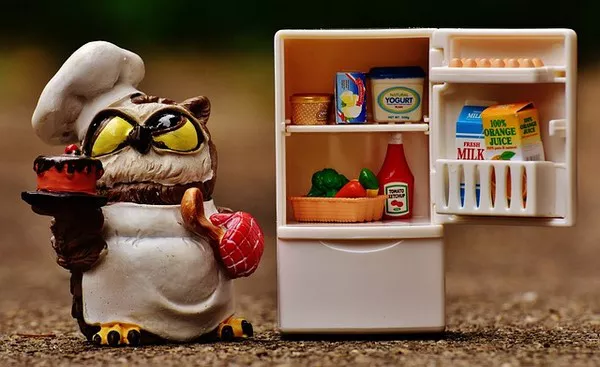In the realm of modern refrigeration technology, the single compressor fridge freezer stands as a cornerstone of household convenience. This innovative appliance combines the functions of a refrigerator and freezer into a single unit, driven by a single compressor system. Understanding the inner workings of these appliances not only enhances our appreciation of their efficiency but also sheds light on their operational principles.
Introduction to Single Compressor Fridge Freezers
Single compressor fridge freezers are designed to provide cooling and freezing functionalities within a compact and efficient framework. Unlike traditional refrigerator-freezer combinations that may utilize separate cooling mechanisms for each compartment, single compressor units streamline these processes into one cohesive system. This integration not only reduces space and energy consumption but also optimizes temperature control.
The Role of the Compressor
At the heart of every single compressor fridge freezer lies the compressor itself—a crucial component responsible for the appliance’s cooling capabilities. The compressor operates on the principle of vapor compression refrigeration, a thermodynamic process that facilitates the transfer of heat from inside the unit to the external environment.
Compression Process: The refrigeration cycle begins as the compressor compresses a gaseous refrigerant, typically R134a or similar compounds, increasing its pressure and temperature significantly.
Heat Exchange: The hot, pressurized refrigerant then moves through a condenser coil located on the exterior or back of the appliance. Here, it releases heat to the surrounding air, causing the refrigerant to condense into a high-pressure liquid.
Expansion Valve: The high-pressure liquid refrigerant passes through an expansion valve, where it undergoes a rapid reduction in pressure. This process causes the refrigerant to evaporate and absorb heat from the interior of the fridge and freezer compartments.
Evaporator Coil: Within the fridge freezer, the now-cooled refrigerant circulates through an evaporator coil. As it absorbs heat from inside the compartments, it evaporates back into a low-pressure gas.
Return to Compressor: The cycle completes as the low-pressure gas returns to the compressor to begin the process anew.
Cooling and Freezing Mechanisms
Single compressor fridge freezers maintain distinct temperature zones for refrigeration and freezing through a combination of design features and operational controls:
Temperature Control: Thermostats regulate the compressor’s operation, maintaining desired temperatures in both fridge and freezer compartments. Typically, freezers are kept at lower temperatures (around -18°C or 0°F) compared to refrigerated sections (around 4°C or 39°F).
Air Circulation: Integrated fans ensure even distribution of cooled air throughout both compartments, preventing temperature fluctuations and maintaining food freshness.
Efficiency and Energy Consumption
Efficiency is a hallmark of single compressor fridge freezers, owing to their unified cooling system and advanced technology:
Energy Ratings: Most modern units are Energy Star rated, indicating high energy efficiency and reduced electricity consumption compared to older models.
Insulation: High-quality insulation materials help minimize heat transfer between the interior and exterior of the appliance, enhancing overall efficiency.
Defrost Mechanisms: Some models feature automatic defrost cycles, reducing ice buildup and optimizing cooling efficiency over time.
Design and Construction
The structural design of single compressor fridge freezers contributes significantly to their functionality and durability:
Materials: Stainless steel, aluminum, and durable plastics are commonly used for the exterior casing, ensuring longevity and ease of maintenance.
Shelves and Compartments: Adjustable shelves and compartments offer flexibility in organizing food items while maximizing storage capacity within the limited space.
Doors and Seals: Magnetic or mechanical seals on doors prevent cold air from escaping and humidity from entering, maintaining consistent temperatures and food freshness.
Maintenance and Care
Proper maintenance is essential to prolong the lifespan and efficiency of single compressor fridge freezers:
Cleaning: Regular cleaning of interior surfaces, shelves, and door seals prevents mold growth and ensures optimal cooling performance.
Temperature Monitoring: Periodically check and adjust thermostat settings to maintain recommended temperatures for food safety.
Condenser Coil Maintenance: Clean condenser coils annually to remove dust and debris, allowing for efficient heat exchange and preventing compressor strain.
See Also 4 MAIN COMPONENTS OF A REFRIGERATION SYSTEM
Conclusion
The single compressor fridge freezer represents a pinnacle of refrigeration technology, combining efficiency, functionality, and convenience in a compact design. Understanding its operational principles—from the role of the compressor in vapor compression refrigeration to the mechanisms for cooling and freezing—provides insight into its everyday utility. As these appliances continue to evolve with advancements in materials and energy efficiency, they remain essential in modern households, catering to diverse culinary needs while prioritizing sustainability and performance.

